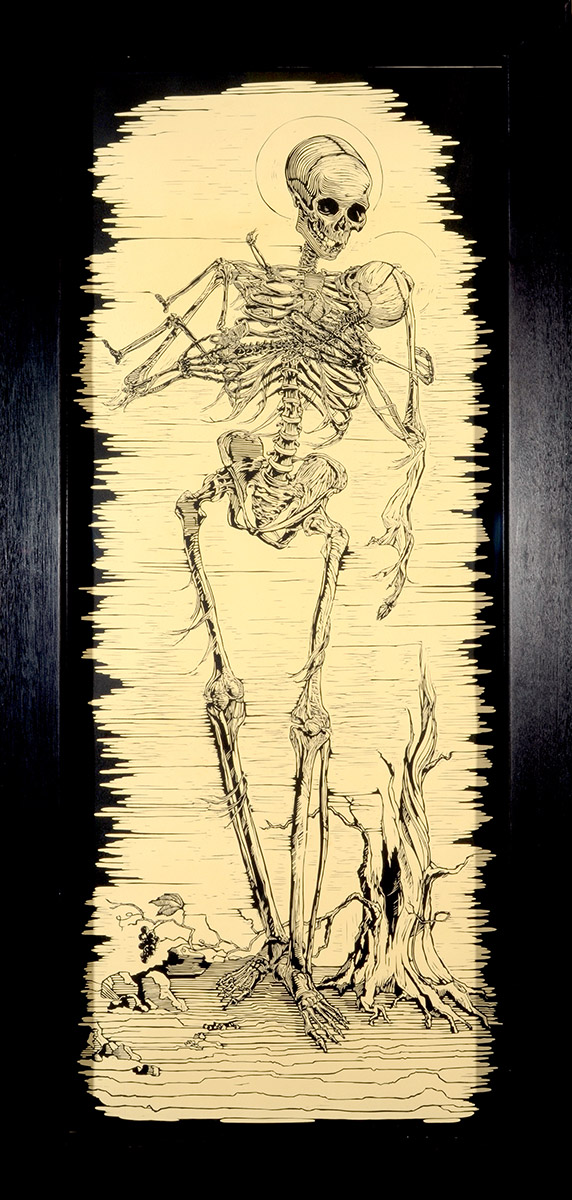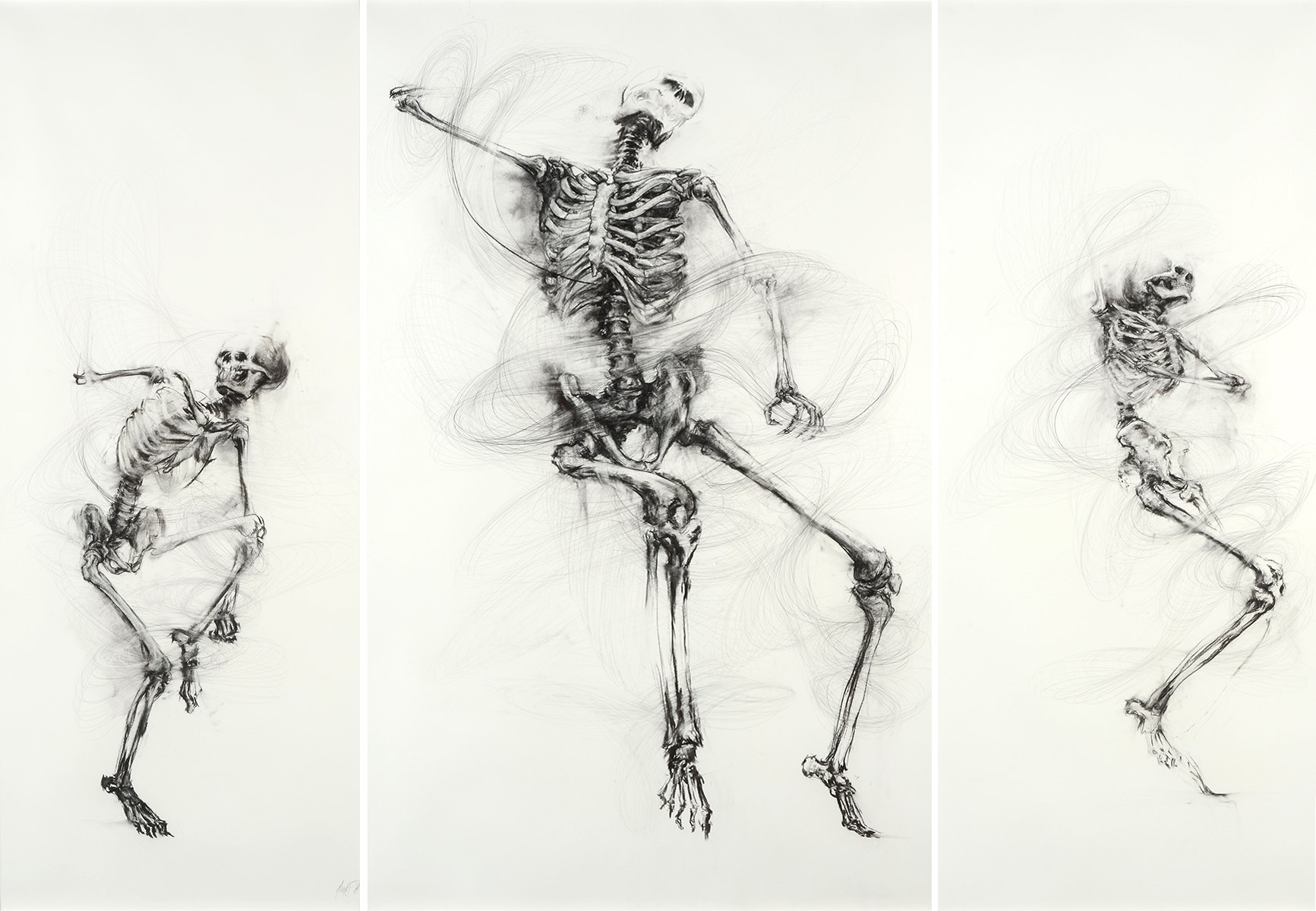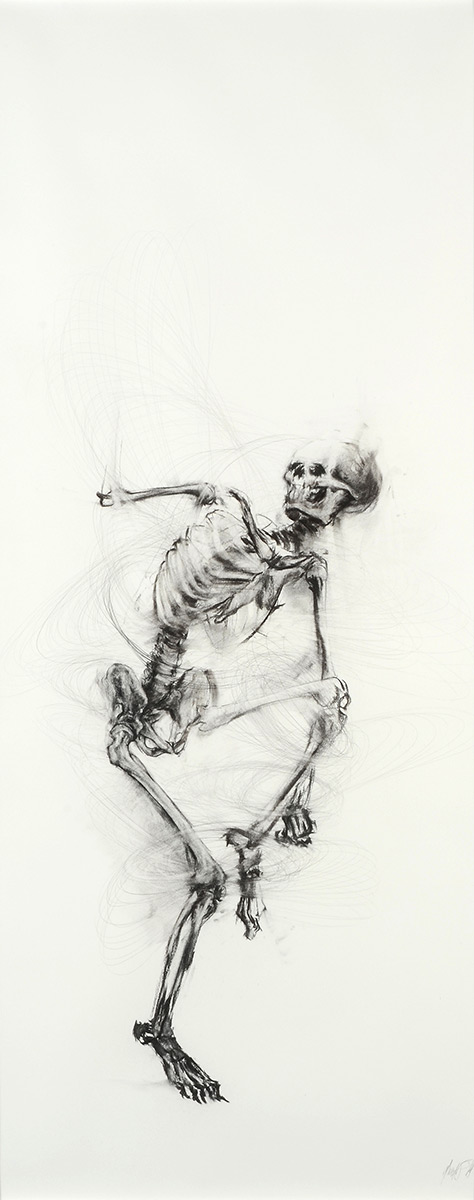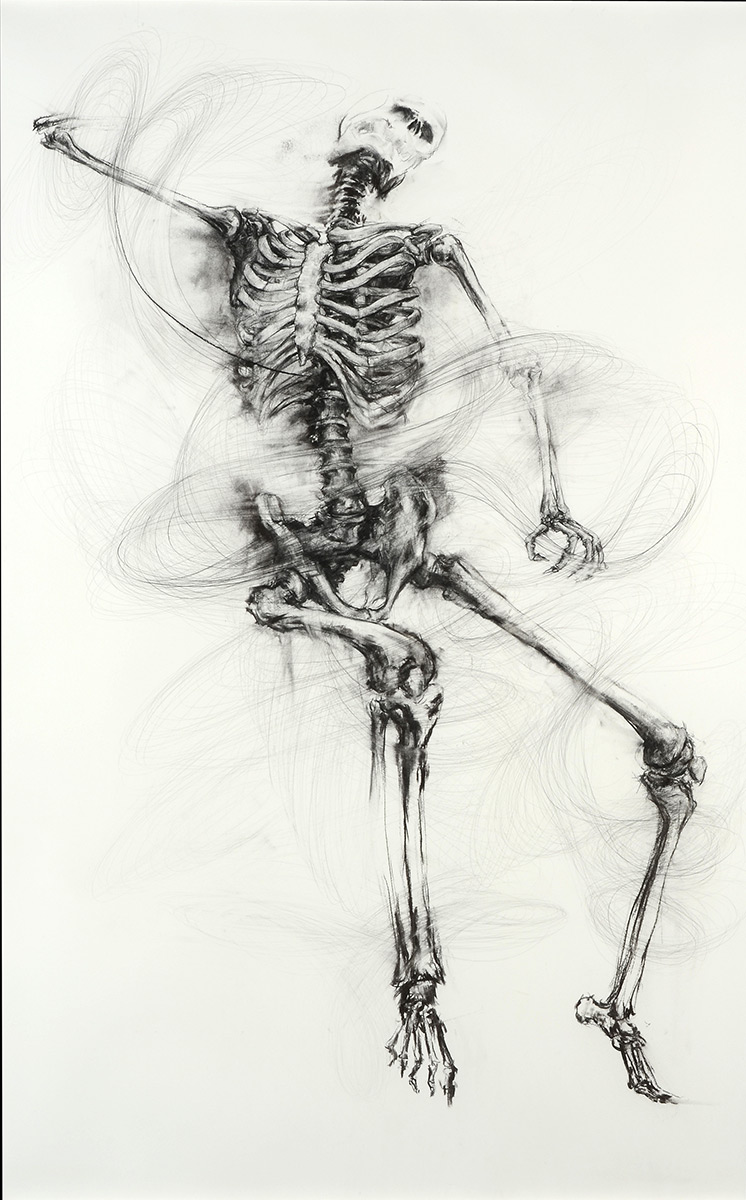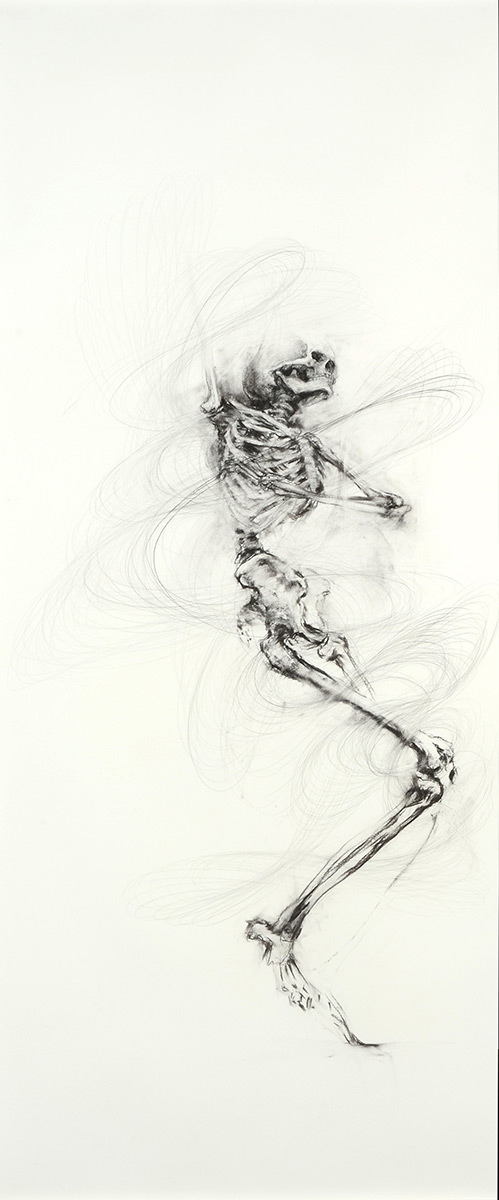WIM BOTHA (b. 1974)
Apocalumbilicus
2006
linoprint on tea-stained Hahnemühle paper, wood, brown paper tape, coffee, water
edition 9/12
197.4 x 80.5 cm
Genesis and apocalypse, birth and death coalesce in the title of this work – a compound word combining the words ‘apocalypse’ and ‘umbilicus’, the point at which the gestating child is attached to the body of the mother. The grain of the wood in the roughly carved edges of the linocut has an organic quality about it, recalling the life of the tree itself, which is present in both in the content (the etiolated tree trunk depicted alongside the skeleton) and the form (both the wooden block into which the image was initially carved and the paper) of this work. The life, death and repurposing of the tree echoes the human life cycle, which is brought starkly to mind by the image of the skeleton, which appears oddly animated, standing erect, as if still alive. The line between life and death is not so clear here. What is highlighted instead is the cycle, continuum or process by which living forms expire and are recycled into new forms.
Dead Laocoön – Triptych
2008
charcoal and conte on paper
200 x 90 x 200 x 122 x 200 x 900 cm
Dancing ecstatically, as if still vigorously alive, the human skeleton depicted in this series of haunting charcoal drawings appears to be defying death even as it is the very symbol of death itself.
Laocoön was the Trojan priest who predicted the fall of Troy to the Greeks, and came to a violent end when two great serpents emerged from the sea and crushed him and his two sons to death. This mythological figure is also the subject of a large-scale bronze sculpture by Botha inspired by the Greek sculpture Laocoön and His Sons, excavated in 1506 and now on display in the Vatican. In 2003, Botha visited the Vatican Museums where he photographed… Continue Reading
BIOGRAPHY
Wim Botha was born in Pretoria and graduated from the University of Pretoria with a BA in Visual Art in 1996.
Botha employs a diverse and often unconventional array of media – from carved books, marble, bronze and wood, to oil paint and ink. His reinterpretations of Baroque and Renaissance figures in his unique armoury of materials sees them transformed, blurred and reconstructed, subverting their original meaning. In 2004, Botha created a replica of Michelangelo’s Pietà out of maize meal.
Objects like bibles, encyclopedias, government gazettes, trophy mounts and religious icons often feature in his sculptural installations, which might be read as formal deconstructions of ideas related to history, religion, power, status, belief and tradition.
‘In my paper works, I carve subjects from stacked or compressed documents containing selected texts with content and meaning significant to the work. By carving a form from these texts, the information it conveys becomes a part of the physical substance of the work and is directly related to the form,’ he has said.
Solo exhibitions have taken place at the 21c Museum Hotel in Louisville (2020); North Carolina Museum of Art in Raleigh, and the 21c Museum Hotel in Durham (2019); the Norval Foundation (2018); Galerie Hans Mayer (2017); Feldbusch Wiesner Rudolph (2017, 2019, 2021); Fondation Blachère in Apt, France (2016); Galerie Jette Rudolph, Berlin (2015); the National Arts Festival in Grahamstown (2014); Kunstraum Innsbruck, Austria (2013), and the Sasol Art Museum, Stellenbosch, as the Stellenbosch University Wordfest Artist for 2013, in addition to exhibitions at Stevenson, Cape Town and Johannesburg (2003 – 24).
Notable group exhibitions include We, the People: 30 Years of Democracy in South Africa, Norval Foundation, Cape Town, South Africa (2024); Otherscapes, Joburg Contemporary Art Foundation, South Africa (2023); Healing, WhiteSpaceBlackBox, Neuchâtel, Switzerland (2023); Sculpture at the Institute of Contemporary Art Indian Ocean (2018); The Divine Comedy: Heaven, purgatory and hell revisited by contemporary African artists at MMK (Museum für Moderne Kunst), Frankfurt, Germany, travelling to other venues (2014 – 2015); Lichtspiele at Museum Biedermann, Donaueschingen, Germany (2014); and Imaginary Fact: South African Art and the Archive, the South African Pavilion at the 55th Venice Biennale (2013).
He has been the recipient of a number of prestigious awards, including the Helgaard Steyn Prize for sculpture (2013), the Standard Bank Young Artist Award (2005) and the first Tollman Award (2003).
His work is included in a number of important collections, including the Iziko South African National Gallery Collection and the Spier Art Collection.
He is based in Cape Town.


